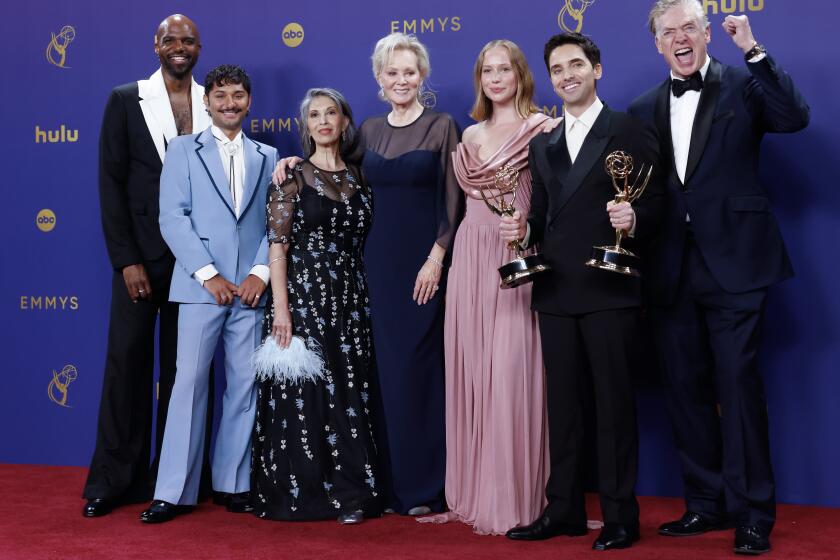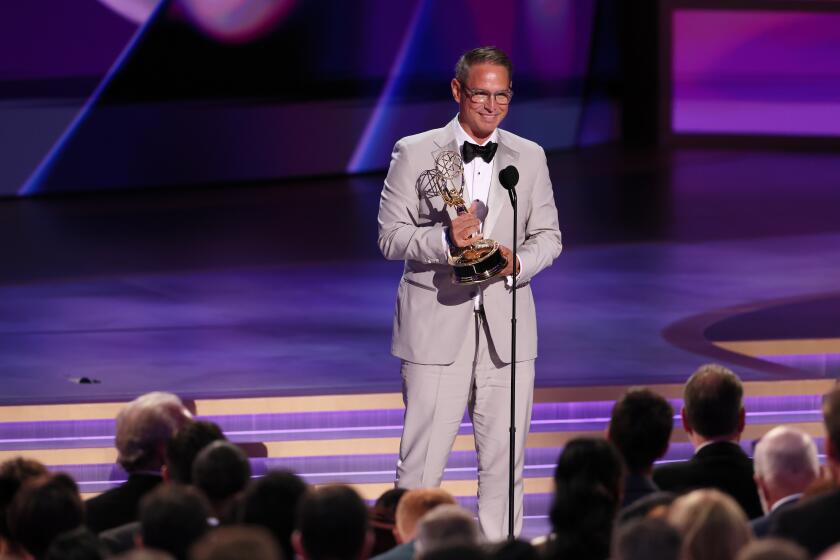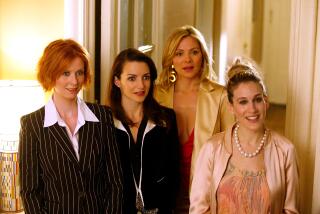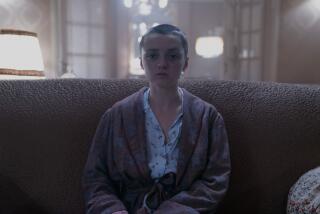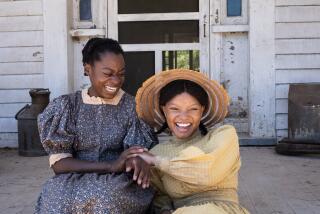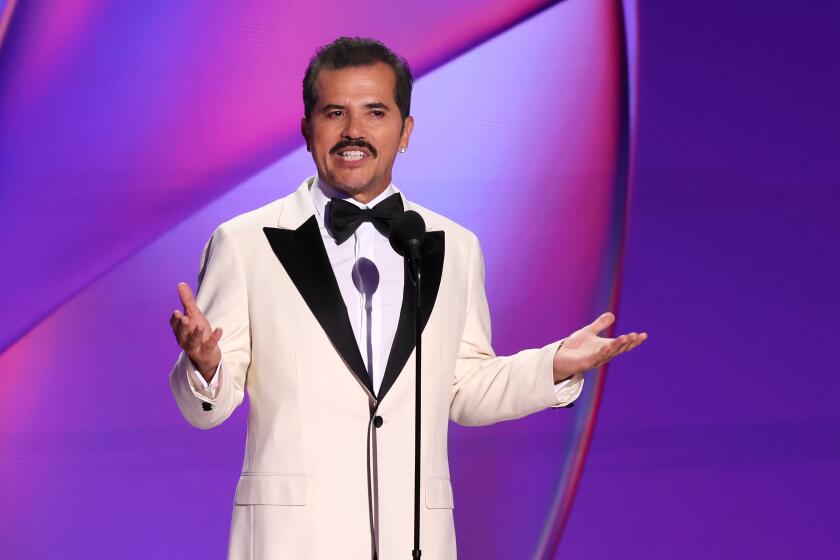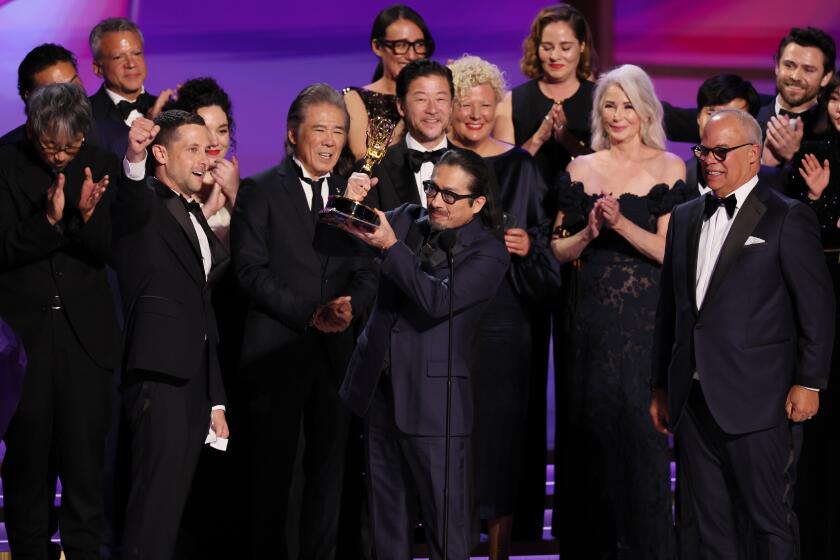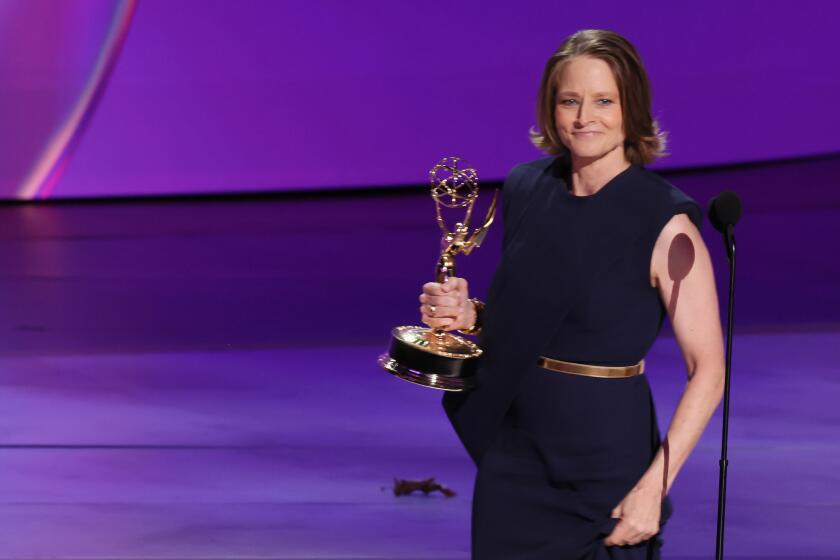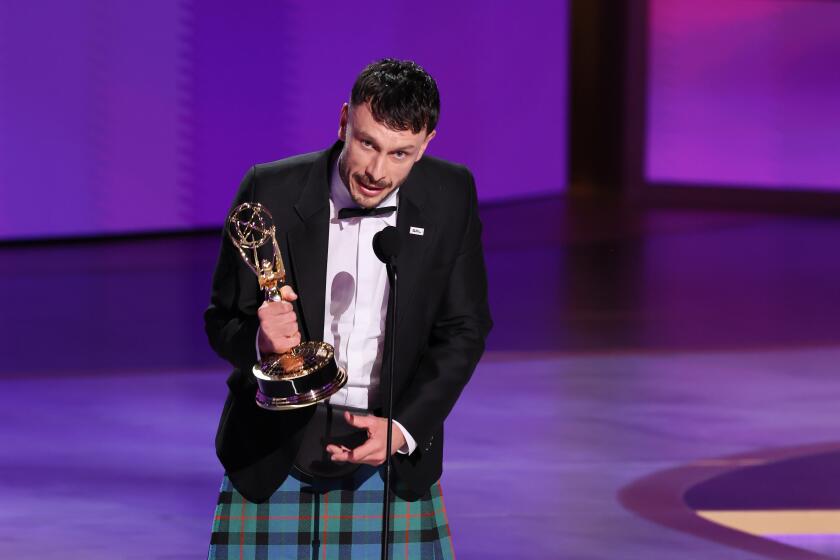‘Fleabag’ scene-stealer Sian Clifford’s Emmy nod was 16 years in the making
During her first week at the Royal Academy of Dramatic Art about 16 years ago, Sian Clifford headed to the Tube and wound up in a car with a classmate named Phoebe Waller-Bridge. After eyeing each other tentatively, the women struck up a conversation. They didn’t stop talking for the entire 45-minute ride on the Central Line to west London.
“By the end of that journey, I can honestly say we were really close friends,” Clifford says, “and that’s never wavered.”
Their instant chemistry has not only sustained a decade and a half of professional twists and turns, but also fueled one of this year’s most acclaimed television series, Amazon’s “Fleabag,” which was nominated for 11 Emmys for its second (and supposedly final) season. In the poignant comedy, Waller-Bridge plays a single London woman grieving her best friend’s suicide and trying to rein in her sexually impulsive behavior.
Clifford stars as Claire, the protagonist’s “super high-powered, perfect, anorexic, rich sister,” whose giant corner office and (mostly) impeccable appearance can’t quite disguise the curdling toxicity of her marriage to Martin (Brett Gelman), a relationship that has also driven a wedge between the siblings.
While the bittersweet love story between Fleabag, as Waller-Bridge’s character is known, and the so-called “Hot Priest” (Andrew Scott) has inspired much of the critical swooning over Season 2, the sisters’ gradual reconciliation and ultimate support for each other amid miscarriages, catastrophic haircuts and romantic missteps gives the series its emotional backbone.
“It’s an accurate, beautiful depiction of the messiness of sisterhood,” Clifford says by phone from London, where she’s currently filming “Quiz,” a fact-based limited series about a British couple accused of cheating their way to a million-pound prize on “Who Wants to be a Millionaire?” at the height of the game show’s global popularity in 2001.
Clifford is up for an Emmy on Sunday along with nearly every other actress in the series — “a testament,” she says, “to the humanity with which Phoebe writes characters, but particularly women.”
She and Waller-Bridge first fantasized about playing sisters at RADA, where Clifford stood out for her sophistication.
“When the rest of us at drama school were throwing ourselves at walls and wearing ridiculous costumes to get attention, she was working on the detail, the depth and the integrity of the character. It took me a while to learn how to do that. It’s in her bones,” writes Waller-Bridge in an email effusive with praise for her old friend. (“I’d watch her read the back of a shampoo bottle and I know I’d be moved to tears by the end,” she says.)
Clifford first played an incarnation of Claire about a decade ago — well before “Fleabag” — in a short sketch written by Waller-Bridge for an experimental “scratch night”: Writers came up with five-minute scenes inspired by headlines in the news.
Waller-Bridge’s sketch was called “Use Your Vote” and featured two sisters attending a feminist lecture. When asked if anyone in the audience would trade five years of their life for the so-called perfect body, the two raise their arms, then sheepishly retract them — a scene that wound up in the first episode of “Fleabag.”
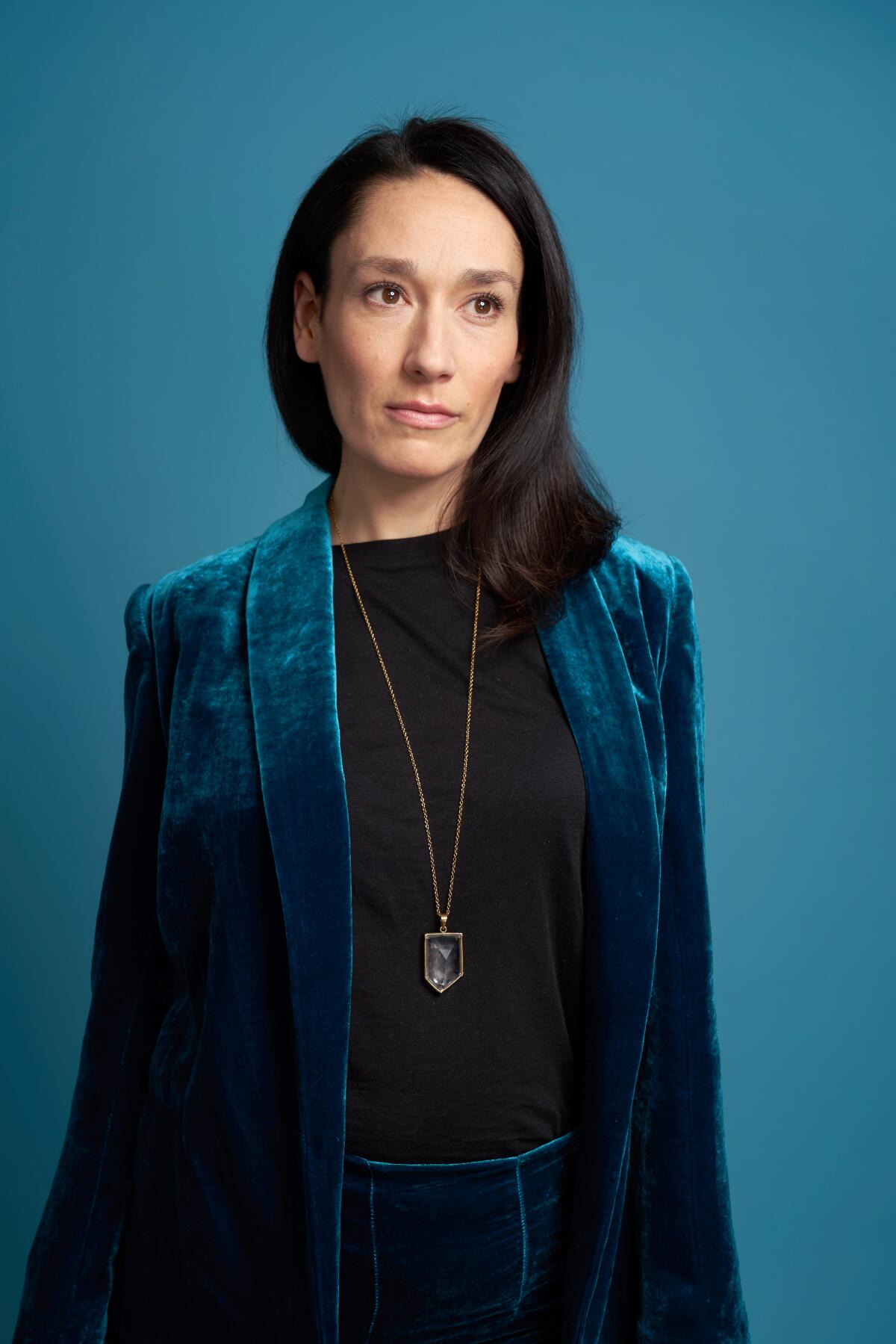
Clifford would go on to reprise the role many times over the years. “Whenever Phoebe had a showcase for producers, I would always come and play Claire,” she says.
“I knew who Claire was in the context of that sketch, but until I saw Sian perform her, I didn’t imagine her living on in any way,” Waller-Bridge recalls. “Sian made the character so human, so funny, so heartbreaking that I couldn’t shake her. I wanted more! That’s what you get when Sian performs — instant layers, instant complexity.”
Later, Waller-Bridge began adapting her one-woman stage show, “Fleabag,” which had been a sensation at the Edinburgh Fringe Festival, into a television series. She wrote Claire into the narrative.
By this time, Clifford was working steadily on the London stage — her credits included a National Theatre production of “Beauty and the Beast”— but film and television roles had been much harder to come by. The BBC wanted a name for Claire, so Waller-Bridge had to fight to get her friend an audition. “She was on a mission,” Clifford recalls.
Waller-Bridge pushed to cast Clifford, who was, she says, “the only person I could imagine playing this part. I never had to ‘explain’ Claire to Sian, she just knew her instinctively. She knew not to pigeonhole her as the uptight, rich, anal sister — a character we have seen so many times. She finds the humanity in every beat and brings it right to the surface. And then she’s funny to boot. Jesus, I could talk about her forever!”
One of the main reasons to make a second season was to give Clifford “something she could really get her teeth into,” Waller-Bridge adds. In the show’s sophomore outing, Claire is dealing with the aftermath of her miscarriage and trying to keep her marriage together despite her feelings for her Finnish colleague, Klare. In an unusually impulsive moment, Claire gets a disastrous asymmetrical haircut which, as Fleabag memorably describes it, makes her look like a pencil — a line that Waller-Bridge came up with on set as they were struggling to find the rhythm of the scene, and which perfectly captures the complicated dynamic between the sisters.
“Playing sisters with one another is very easy,” Clifford says. “And Phoebe would say the easiest scenes for her to write are usually between Claire and Fleabag. It definitely feels like there’s something alchemical, something otherworldly, about what she’s created.”
At this point, playing Claire is “like drinking water to me,” Clifford adds. “I genuinely don’t even think about it. If you asked me to go into her now, I could. The muscle memory of Claire is so very strong. I’ve been with that character such a long time. She’s changed and she’s developed into a fully embodied human to me. I forget that she’s not real.”
But she’s also ready to explore other characters on screen. In “Quiz,” which will air on AMC next year, she plays Diana Ingram, who allegedly used strategically timed coughs to steer her husband, Charles (played by “Succession” star Matthew MacFadyen), toward the correct answers on the game show. The miniseries is directed by Stephen Frears and written by Tony-nominated playwright James Graham (“Ink”), another old buddy from the London theater scene. (He collaborated with Waller-Bridge’s theater company, DryWrite.)
“This period of history that we’re dealing with in ‘Quiz’ is very pertinent for where we are politically now,” Clifford says. “The beginning of the truth blurring and the media’s control over that. It’s fascinating to work on.”
She was trying to hunker down and prepare for “Quiz” when the Emmy nominations were unveiled in July. Rather than anxiously following social media, Clifford opted to meditate in her living room as the announcement was made.
“I was a like, ‘You know what, it doesn’t matter. What will be will be.’ I genuinely kind of released it to the universe. Sounds hokey, but it’s what I did.” (One of Clifford’s side projects is a meditation website called Still Space.)
The universe delivered. The Emmy nod is Clifford’s first nomination of any kind in 13 years of professional acting, and she’s competing in one of this year’s most fiercely competitive categories — one that includes Oscar-winner and “Fleabag” costar Olivia Colman. Waller-Bridge called her just as she was hearing the news. “We got on the phone and bawled our eyes out together,” Clifford says. “I just wanted to see her name and she just wanted to see mine.”
“There have been moments in my career where I considered walking away from acting. It’s very special to have gone through all of that with someone and really seeing all the highs, yes, but also all the lows. And we couldn’t be happier for each other.”

More to Read
The complete guide to home viewing
Get Screen Gab for everything about the TV shows and streaming movies everyone’s talking about.
You may occasionally receive promotional content from the Los Angeles Times.

